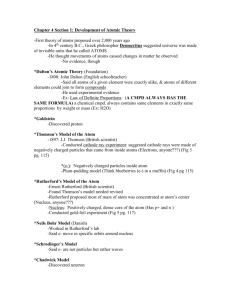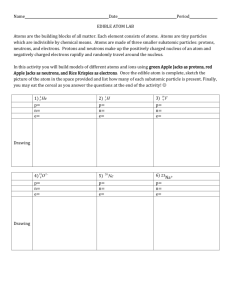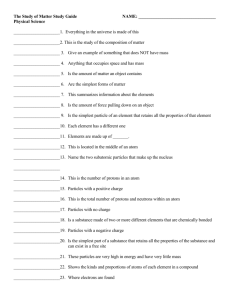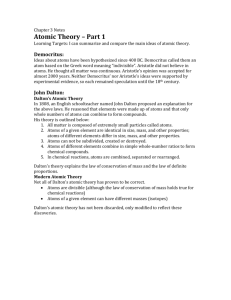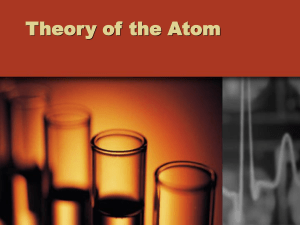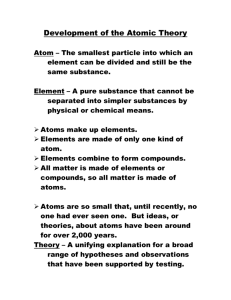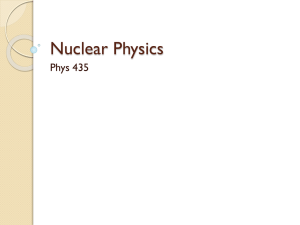Unit 2 Review Ques
advertisement
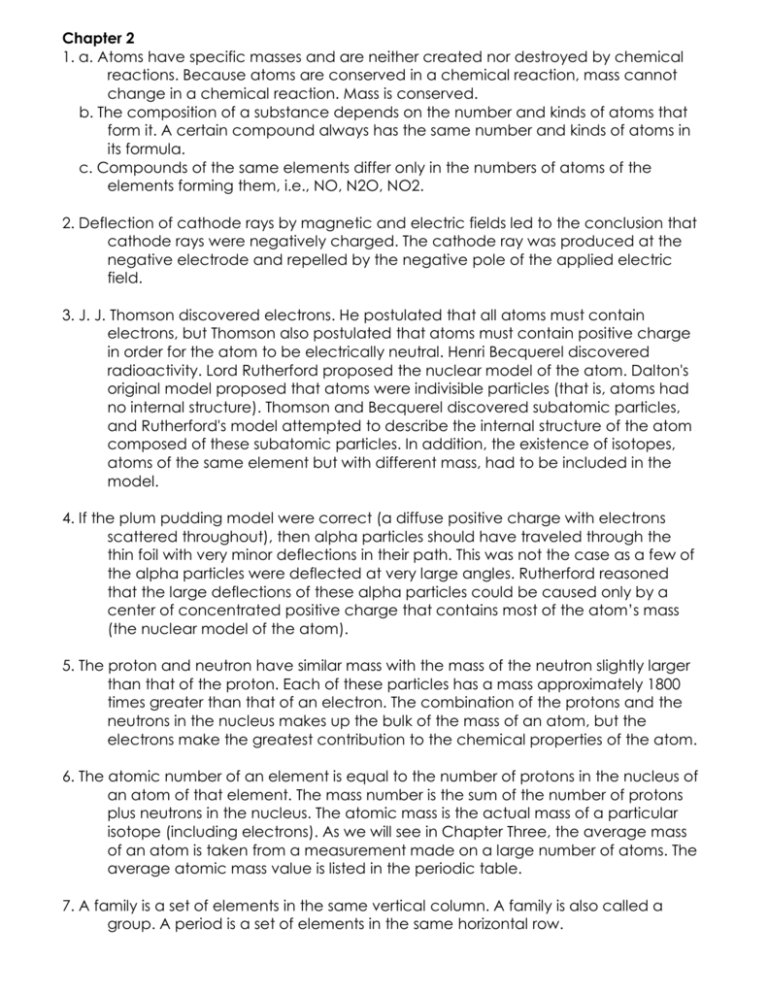
Chapter 2 1. a. Atoms have specific masses and are neither created nor destroyed by chemical reactions. Because atoms are conserved in a chemical reaction, mass cannot change in a chemical reaction. Mass is conserved. b. The composition of a substance depends on the number and kinds of atoms that form it. A certain compound always has the same number and kinds of atoms in its formula. c. Compounds of the same elements differ only in the numbers of atoms of the elements forming them, i.e., NO, N2O, NO2. 2. Deflection of cathode rays by magnetic and electric fields led to the conclusion that cathode rays were negatively charged. The cathode ray was produced at the negative electrode and repelled by the negative pole of the applied electric field. 3. J. J. Thomson discovered electrons. He postulated that all atoms must contain electrons, but Thomson also postulated that atoms must contain positive charge in order for the atom to be electrically neutral. Henri Becquerel discovered radioactivity. Lord Rutherford proposed the nuclear model of the atom. Dalton's original model proposed that atoms were indivisible particles (that is, atoms had no internal structure). Thomson and Becquerel discovered subatomic particles, and Rutherford's model attempted to describe the internal structure of the atom composed of these subatomic particles. In addition, the existence of isotopes, atoms of the same element but with different mass, had to be included in the model. 4. If the plum pudding model were correct (a diffuse positive charge with electrons scattered throughout), then alpha particles should have traveled through the thin foil with very minor deflections in their path. This was not the case as a few of the alpha particles were deflected at very large angles. Rutherford reasoned that the large deflections of these alpha particles could be caused only by a center of concentrated positive charge that contains most of the atom’s mass (the nuclear model of the atom). 5. The proton and neutron have similar mass with the mass of the neutron slightly larger than that of the proton. Each of these particles has a mass approximately 1800 times greater than that of an electron. The combination of the protons and the neutrons in the nucleus makes up the bulk of the mass of an atom, but the electrons make the greatest contribution to the chemical properties of the atom. 6. The atomic number of an element is equal to the number of protons in the nucleus of an atom of that element. The mass number is the sum of the number of protons plus neutrons in the nucleus. The atomic mass is the actual mass of a particular isotope (including electrons). As we will see in Chapter Three, the average mass of an atom is taken from a measurement made on a large number of atoms. The average atomic mass value is listed in the periodic table. 7. A family is a set of elements in the same vertical column. A family is also called a group. A period is a set of elements in the same horizontal row.



